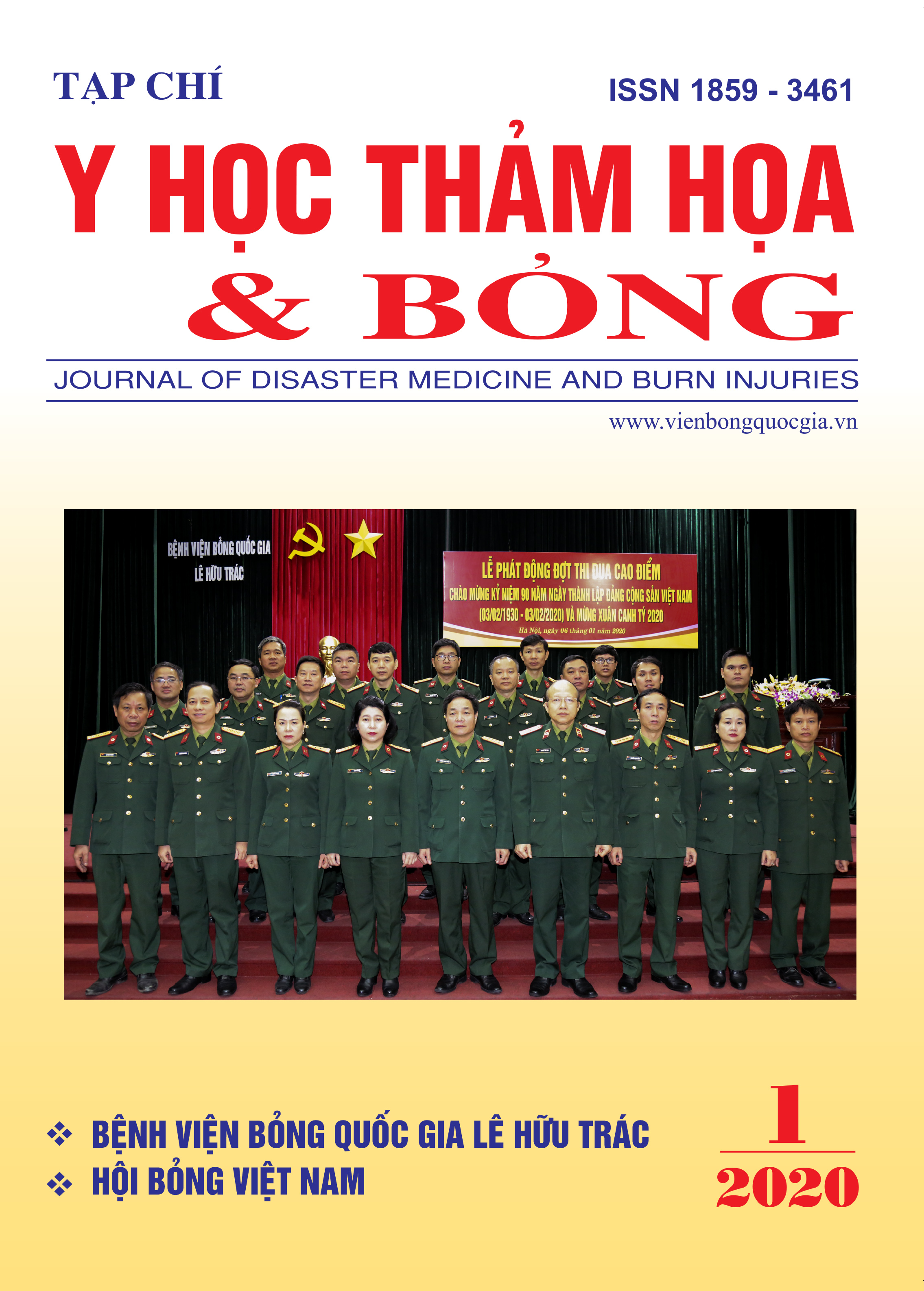Study on tolerability on healthy skin and the long-term effects on experimental animals of cellulose nano gel
Main Article Content
Abstract
Nanocellulose material gained from bacteria culture has the effect of temporary wounds cover. Deer velvet contains many growth factors that are crucial for would healing process such as EGF, TGF and IGF. The Nanocellulose material combining with extraction of deer velvet (BC-A Gel) produced by the Center for High-tech Research and Development Ho Chi Minh City and Geneworld Co., Ltd meets basic standards. In order to provide the bases before clinical application, we conducted the research to assess tolerance of the product in healthy rabbit skin and its effect on long-term use in rabbits complying with the regulations of Vietnam Ministry of Health, WHO and OECD.
Results show that the product application on healthy skin does not cause irritation in which the irritation point is equal to zero. Application dose of 5g on
area of 30cm2 rabbit skin in 30 consecutive days does not cause any systemic whole-body disorder. There are not significant change (p> 0.05) in body weight, hematological and biochemical testing indicators, ECG. There are not observed histopathological lesions in liver, spleen, kidney as well.
Article Details
Keywords
Nanocellulose, deer velvet, tolerance, chronic toxicity
References
2. Bielecski S. et all (2000);”Bacterial cellulose”, Institute of technical Biochemical, Technical University of Lodz, Poland.
3. Bielecki S. (2006); “External and internal applications of microbial cellulose in medicine”, Institute of Technical Biochemistry, Faculty of Biotechnology and Food Sciences, Technical University of Lodz, Poland.
4. Rambo C. R. et all (2007), ”Template assisted synthesis of porous nanofibrous cellulose membranes for tissue engineering”, Materials science and engineering C 28(2008) 549-554.
5. Huỳnh Thị Ngọc Lan, Nguyễn văn Thanh (2006),“Nghiên cứu các đặc tính màng cellulose vi khuẩn từ Acetobacter xylinum sử dụng làm màng trị bỏng”, Dược học số 5, 2006.
6. Nguyễn Ngọc Tuấn, Nguyễn Băng Tâm (2012); “Nghiên cứu tác dụng điều trị tại chỗ tổn thương bỏng của màng BC từ vi khuẩn Acetobacter xylinum” , Tạp chí Y học thảm họa và bỏng, tr 45-54
7. Chiara Rigo, Leitizia Ferroni, Ilaria Tocco et al. (2013); “Active Silver Nanoparticles for Wound Healing”; Int J Mol Sci. 2013 Mar; 14(3): 4817 - 4840.
8. Nguyễn Ngọc Tuấn, Đoàn Chí Thanh, Nguyễn Ngọc Thịnh (2019); “Nghiên cứu xác định độc tính cấp tinh và bán trường diễn của gel nanocellulose kết hợp chiết xuất nhung hươu”, tạp chí YHTH và bỏng, số 1, tr 20-21
9. OECD guideline for testing chemicals, OECD/OCDE 404; Acute Dermal Irritation/Corrosion, Adopted 24th April 2002.
10. OECD guideline for testing chemicals, OECD/OCDE 423; Repeated Dose 28-day Oral Toxicity Study in Rodents, Adopted 3rd October 2008.
11. Bộ Y tế Cộng hoà xã hội chủ nghĩa Việt Nam (1996).Quy định về nghiên cứu dược lý các thuốc y học cổ truyền.Quyết định 371/QĐ-BYT.
12. WHO (1993): Research guidelines for evaluating the safety and efficacy of herbal medicines, Manila, Philippines, pp 35 - 41.
13. Abrham W.B. (1978): Techniques of animal and clinical toxicology, Med. pub. Chicago, pp 55 - 68.


